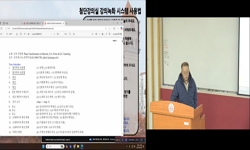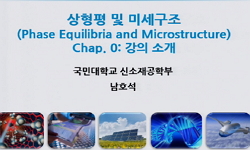This paper explores how the operation of the interpretive complex (Int) is derived by phase heads (C, v, D), when the non-genitive possessor in the inalienable possession construction can undergo the peripheral movement (or A -movement). The periphera...
http://chineseinput.net/에서 pinyin(병음)방식으로 중국어를 변환할 수 있습니다.
변환된 중국어를 복사하여 사용하시면 됩니다.
- 中文 을 입력하시려면 zhongwen을 입력하시고 space를누르시면됩니다.
- 北京 을 입력하시려면 beijing을 입력하시고 space를 누르시면 됩니다.
https://www.riss.kr/link?id=A103523904
- 저자
- 발행기관
- 학술지명
- 권호사항
-
발행연도
2005
-
작성언어
-
- 주제어
-
KDC
740
-
등재정보
KCI등재
-
자료형태
학술저널
-
수록면
53-70(18쪽)
- 제공처
- 소장기관
-
0
상세조회 -
0
다운로드
부가정보
다국어 초록 (Multilingual Abstract)
in this paper is based on Chomsky s (2004) recent claim that the peripheral movement is a non-Agree-driven movement, or a free internal merge to the edge of a phase due to the edge feature of the phase head (cf. Yang 2005).
That is, edge effects are particularly motivated by an edge feature-driven movement.
PIC forces movement to proceed successive-cyclically phase by phase. Three such pieces of evidence come from observations about the peripheral movement of the non-genitive possessor, Int effect and anaphor binding.
This paper explores how the operation of the interpretive complex (Int) is derived by phase heads (C, v, D), when the non-genitive possessor in the inalienable possession construction can undergo the peripheral movement (or A -movement). The peripheral movement is only to induce structural configuration for focus, topic, operator, etc., at the edge of a phase, rather than to maintain feature-matching for Agree (Chomsky 2004). The analysis put forward
in this paper is based on Chomsky s (2004) recent claim that the peripheral movement is a non-Agree-driven movement, or a free internal merge to the edge of a phase due to the edge feature of the phase head (cf. Yang 2005).
That is, edge effects are particularly motivated by an edge feature-driven movement.
PIC forces movement to proceed successive-cyclically phase by phase. Three such pieces of evidence come from observations about the peripheral movement of the non-genitive possessor, Int effect and anaphor binding.
목차 (Table of Contents)
- 1. Introduction
- 2. Peripheral Movements and Phase Edge Features
- 3. Successive Cyclic Movement
- 4. Int Effect in the OS Position
- 5. Reflexive Anaphor Binding
- 1. Introduction
- 2. Peripheral Movements and Phase Edge Features
- 3. Successive Cyclic Movement
- 4. Int Effect in the OS Position
- 5. Reflexive Anaphor Binding
- 6. Conclusion
동일학술지(권/호) 다른 논문
-
A PF‐based Approach to the That‐t Effect
- 현대문법학회
- Sun‐
- 2005
- KCI등재
-
On the Nature of Locality: Locality Circumvention Effects in Passivization of Applicative Structures
- 현대문법학회
- Ju-Eun Lee
- 2005
- KCI등재
-
- 현대문법학회
- 임채경
- 2005
- KCI등재
-
Why is HOW in Korean Insensitive to Islands?:
- 현대문법학회
- Daeho Chung
- 2005
- KCI등재





 스콜라
스콜라






